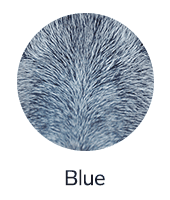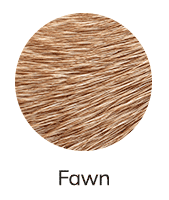Greyhound: Your Complete Guide
Widely recognized as the world’s fastest dog breed, the greyhound is a dog that has much more than what meets the eye. In fact, most people who don’t know as much about the greyhound find themselves surprised by many of their traits.
Anyone who’s considering getting a greyhound, whether through adoption or purchasing a puppy from a breeder, should educate themselves on the characteristics of this breed, and in this article, we will cover everything you need to know about the world’s fastest dog.
Read on as we cover the greyhound’s size, coat type, temperament, exercise needs, trainability, and much more.
Quick Look at the Greyhound
The table below summarizes the greyhound’s characteristics. We will cover each point in more detail in the later parts of the article.
| Weight/Height | 60-70 pounds / 27-30 inches |
| Coat Type | Short, smooth |
| Grooming Needs | |
| Shedding | |
| Temperament | Gentle, sociable, affectionate, goofy |
| Good With Kids | |
| Good With Other Animals | |
| Intelligence | |
| Easy to Train | |
| Energy Level | |
| Barking Habits | |
| Lifespan | 10-13 years |
What Is the History of Greyhounds?
The greyhound’s history is sort of all over the place as their exact origins are unknown and similar sighthounds have been utilized by various cultures throughout the years. However, one thing is for sure – these dogs date back thousands of years, with many sighthounds having been depicted in prehistoric art as well as in the statues of Ancient Egyptians and Romans.
The modern greyhound we know today was shaped by sighthound enthusiasts in the 18th century when the standards were recorded and registered in private studbooks. By the following century, greyhounds were also recorded and registered in public studbooks, which set the standards for the modern greyhound today.
The American Kennel Club recognized the breed in 1885, and the first greyhounds were imported to the United States in 1894. Today, most greyhounds are kept as companion animals, though there’s still a good number of them utilized as hunting dogs.
What Do Greyhounds Look Like?





According to the official breed standards, the greyhound’s color is immaterial, meaning that it is unimportant. Therefore, any greyhound color is accepted under the breed standards. However, this doesn’t mean that they come in all colors. They are actually pretty limited in terms of coat color potential with most greyhounds having black, blue, fawn, red, white, or brindle coats.
Although the coat color potential isn’t as extensive as dog breeds like the poodle, those planning to purchase a greyhound puppy from a breeder will have various options when it comes to choosing a coat color.
What Size Is a Greyhound?
The greyhound is a pretty large dog breed that requires adequate space to live a comfortable life. They stand 27 to 30 inches tall at the withers which is very tall compared to most other dog breeds. However, greyhounds are among the leanest dogs, weighing 60 to 70 pounds.
Although greyhounds aren’t the largest, their height requires many owners to make adjustments at home to accommodate a tall dog like the greyhound. Otherwise, a greyhound can feel cramped up even in a spacious living environment, or be susceptible to injuries due to being simply too tall for everything around them.
What Is a Greyhound’s Coat Type and Length?
The greyhound has a short, smooth coat that’s quite soft to the touch. This coat repels dirt and water, making them go long durations without needing a bath – we cover the exact grooming needs in the caring for a greyhound section below.
This short coat can make them prone to sunburn, so owners in hot climates should take the necessary precautions to ensure the well-being of their dogs, such as applying sunscreen before leaving home during the day.
What Is a Greyhound’s Temperament?
The greyhound has certain temperament traits that most wouldn’t expect to see in the world’s fastest dog. This calm, affectionate, and laid-back nature is a hallmark of the typical Greyhound personality, making them surprisingly mellow and easygoing companions. They are calm, well-mannered dogs that aren’t overly energetic. In fact, they are pretty lazy dogs that enjoy cuddling up on the sofa with their loved ones more than running around and exercising.
Greyhounds are also pretty goofy dogs that act in all sorts of funny ways, especially when they get the zoomies. They often run around the house in short bursts, circling with silly expressions. This happens the most when they’re happy, and since it doesn’t take much to care for these dogs, it is something that many greyhound owners will witness at one point.
There’s much more to discuss about the greyhound’s temperament. Here’s more on their family life, aggressive tendencies, barking habits, and more.
Are Greyhounds Good With Kids?
Greyhounds are a great pick for families with kids. They are gentle dogs that act calmly around kids and tolerate most behaviors. However, these dogs have a sensitive side that makes them suitable for families with older or quiet kids. Younger family members should be taught to respect their space and not bother them while drinking or eating.
With all these to keep in mind, yes, greyhounds are good with kids, but only when the kids know how to behave around dogs, which makes parents the deciding factor on whether a greyhound will do well with kids.
Are Greyhounds Good With Other Animals?
Greyhounds get along excellently with other dogs in the family. A well-socialized greyhound will bond strongly with other canine members, regardless of their size or breed. However, just like kids, they tend to adapt better to living in households with calmer dogs, which makes them a particularly great pick as a second dog to keep senior dogs active.
As for their relationship with other animals, they are also good with cats – or at least they learn quickly that they shouldn’t mess with cats. However, they have a very high prey drive that makes them prone to chase after small animals, which can make them dangerous to be around prey animals like guinea pigs or rabbits. They should be kept in a part of the home inaccessible to a greyhound.
Are Greyhounds Aggressive?
Greyhounds aren’t prone to aggression, but they can act aggressively like any other dog if they aren’t socialized and trained properly. Due to their independent nature, they require lots of socialization early on to prevent aggression later in life. Nonetheless, aggression isn’t something to worry about with greyhounds that are socialized properly.
Also, reactivity shouldn’t be mistaken for aggression, which can happen with greyhounds. If you notice early signs, such as lunging and barking at unfamiliar dogs and people, address reactivity as quickly as possible to prevent it from causing other problems.
Do Greyhounds Bark?
Greyhounds rarely bark. When they do, it’s usually to alert the owner of something happening around their territory. However, when they do, you (and people around) are sure to hear it as they have a powerful bark. Given their low-barking nature, greyhounds are a great choice for those living in apartments – we will touch more on this below.
While they typically don’t bark much, note that greyhounds can bark excessively if they experience behavioral issues. Excess barking due to behavioral issues often has an underlying problem, such as separation anxiety, that must be addressed rather than focusing on barking itself.
Are Greyhounds Affectionate?
Greyhounds are affectionate dogs that enjoy physical contact with their loved ones – so much so that it is common for a greyhound to cuddle up next to you after mealtime or exercise to show their gratitude. If you’re looking for a loving dog, the greyhound is one breed that won’t disappoint in any way.
However, greyhounds can also be prone to separation anxiety due to their affectionate side. If they don’t learn to cope with being alone early, they can display behavioral issues like excessive barking when their owner leaves home. While there are various ways to address such issues, crate training is often the most effective method for helping a greyhound with separation anxiety.
Are Greyhounds Intelligent?
Greyhounds are highly intelligent dogs. The intelligence of this breed was one of the leading reasons why they were utilized for various hunting sports, as they have an impressive ability to track and locate game. In the world today, this means that you will have a dog that understands human cues well and is socially intelligent.
Additionally, the greyhound’s intelligence makes these dogs crave lots of mental stimulation. They need variety in their lives like any other dog. Exploring new places, solving dog puzzles, scent work, and training are some great ways to provide them with the mental stimulation greyhounds need.
Are Greyhounds Energetic?

Greyhounds are considered low-to-medium energy, which is surprising for many as these dogs are literally the fastest dogs on the planet. Coupled with their other characteristics, they are among the best low-energy dogs for first-timers.
These dogs only need about two walks a day that range from 20 to 30 minutes in length. Be sure to include playtime with fetch or mentally enriching activities. As long as a greyhound gets enough exercise, which isn’t demanding compared to many other dog breeds, they can adapt to any living arrangement, including apartment living.
However, as mentioned above, owners might need to make some adjustments due to their tall frame. This should be kept in mind before bringing home a greyhound.
Are Greyhounds Easy to Train?
Greyhounds aren’t the easiest dogs to train, but they aren’t particularly difficult to train either. When training these dogs, following positive reinforcement techniques and using high-value rewards is key to making everything easier. Also, be sure to avoid harsh corrections and you will have a dog that’s responsive to training.
Although greyhounds aren’t suitable for most working dog roles in the modern world, they are one of the top contenders for agility training – this comes as no surprise as greyhounds are the fastest and have agile bodies that don’t experience difficulties going over even the most difficult obstacles.
Are Greyhounds Good Watchdogs?
Whether or not a greyhound makes a good watchdog typically comes down to individual temperament. Since greyhounds aren’t naturally protective, not all of them exhibit behaviors you would expect to see in a watchdog. While some are protective of their territory, they represent only a small percentage of greyhounds.
Therefore, it is best not to rely on a greyhound for any sort of guard work. These dogs are far more likely to turn to the owner for protection than taking on guarding duties.
Are Greyhounds Good Service Dogs?
Due to the difficulties in training and reinforcing behaviors that service dogs require, greyhounds aren’t a common choice when it comes to assisting individuals with disabilities. Although a greyhound can learn a few disability-related tasks, turning them into well-rounded service dogs is often very difficult.
However, this doesn’t mean that greyhounds can’t assist people in other ways – they make excellent emotional support animals with their calm nature, comforting their owners with their loving presence. The greyhound’s sociable temperament also makes them great therapy dogs, especially for comforting seniors.
How to Care for a Greyhound?
We’ve covered various aspects of owning a greyhound above which will give you a good idea of what it is like to care for one of these dogs. While the above aspects, such as exercise and socialization, are critical, the following is also just as important. Here’s more on their care needs, covering grooming, health, and feeding.
Do You Need to Groom a Greyhound?
Greyhounds have minimal grooming needs with their short, smooth coats. They need weekly brushing using a rubber grooming mitt to remove dead hair from their undercoat to keep it clean.
Since the coat is short, they don’t require professional grooming, though deshedding treatments every now and then can help manage shedding at home, especially during seasonal changes. Consider bathing your greyhound when dirty or smelly.
Greyhounds also have some basic grooming needs, like nail trimming, dental care, and ear cleaning. Brushing their teeth is important as greyhounds are prone to periodontal disease; their teeth should be brushed at least once daily, ideally twice a day. If purchasing a puppy, start brushing your puppy’s teeth early so it becomes a habit for both you and your dog.
Do Greyhounds Shed?
Greyhounds shed minimally, which adds to their low-maintenance nature. However, they still shed enough to trigger allergies. Therefore, they aren’t a great choice for those with pet allergies. If you only have mild pet allergies, however, they can be ideal companions if you brush their coat frequently – about two to three times a week.
What Health Problems Do Greyhounds Have?
Greyhounds are overall healthy dogs that spend much of their lives without any apparent health problems. Still, they are prone to developing certain canine health conditions like any dog breed. These include hip dysplasia, arthritis, drug sensitivity, delayed postoperative bleeding, polyneuropathy, cancer and periodontal disease (as mentioned above).
Additionally, greyhounds, like other large and deep-chested dogs, are also susceptible to bloat and gastric dilatation-volvulus. Owners of this breed must educate themselves on the symptoms of these possibly life-threatening conditions to ensure they can identify any potential problems and rush their dogs to the nearest vet or animal hospital.
How Long Do Greyhounds Live?
Greyhounds have a life expectancy of 10 to 13 years, which is the typical Greyhound lifespan, slightly longer than the average for most dog breeds around the same size.
What Should a Greyhound Eat?
A greyhound, like any other dog breed, should eat a high-quality diet that benefits their health and supports their lifestyle. One mistake that many new greyhound owners make is feeding their pups dog food formulated for high-energy dogs. We’ve explained above that they are more low-energy, so they don’t require as much protein to fuel their muscles.
When shopping for dog food, always consider your greyhound’s lifestyle and individual needs rather than buying something generic. Your vet or an animal nutritionist can help guide you to the best diet possible for a greyhound after examining their health and learning more about their lifestyle.
Is a Greyhound the Right Dog for Me?
The greyhound is a dog breed with many unique traits. While they are known for being the fastest, and they have a calm, gentle temperament that surprises many who know very little about this breed. Greyhounds are also very noble dogs with a sensitive side, so they don’t do well in loud homes. They enjoy their personal space and thrive in quiet homes.
With these traits, we can say that the greyhound is a suitable dog for those leading a quiet life. Although they are also fun-loving and need daily exercise, most greyhounds would prefer leading a calm, peaceful life rather than one full of action.
While greyhounds need a calm environment, they often have difficulties adjusting to being alone. Future owners of this breed should also consider how much greyhounds are prone to developing separation anxiety. This makes greyhounds a dog breed more suitable for those working from home or spending most of their time at home.